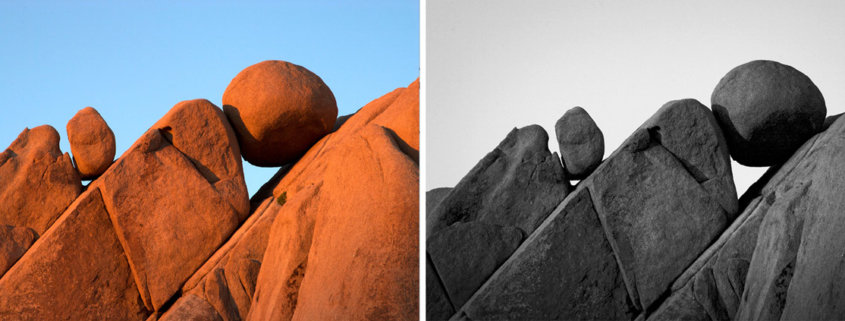When to fall back to Black and White photography?
Often, while perusing the internet or forum groups, someone asks, “If it doesn’t work as a color photograph, should I turn it into black and white?” This statement alone makes me cringe because black and white photography is not always the answer to a lack luster color image. A more important question comes to mind…
When Black and White conversion won’t help
Color image lacks a strong composition

A weak composition in a color photograph results in a weak composition in a black and white image. This image also lacks a strong color pallet which translates into a plain black and white photo.
There is so much wrong with the following color photograph ranging from a poor composition to flat light. In some incidences, low contrast light can look beautiful in black and white. However, only if there is a strong composition. I may have been able to pull more drama out of the black and white image by lightening up the foreground or adding contrast and detail to the sky but regardless, there is too much going on in the foreground. I don’t see any good way of saving it.
Color image is flat and thus lacks contrast

This color photograph lacks a wide color range and thus translates to a flat and unimpressive black and white photograph
The color photograph below lacks a strong white and thus looks flat. When turned to black and white photography, it still has that lack of contrast. If you really want to work hard on the computer, you may be able to burn and dodge to add the contrast but, in my opinion, it would still be a unappealing and uninspiring black and white photograph. I find that it is more important to get the best possible photograph out in the field so that I don’t have to spend as much time on the computer trying to save mediocre images.
The light or sky in the color image is weak

A weak subject along with a bad composition leads to a unexciting black and white photo
The color range of the sky and clouds translates to uninteresting skies in the black and white photograph as well. Even though I was able to pull out detail in the mountains, the overall image is still weak and unexciting. Yes, I could save this image by masking out the sky and replacing it with something different but I tend to be old school; I love trying to get the best possible image in-camera. Plus, for this article, this would be a much more advanced technique that takes time and experience to pull off flawlessly.
When to fall back to black and white photography?
Follow the basic rules of composition, lighting, and exposure and then take into account drama, clean blacks and clean whites, and tonal contrast. The following images can work as color and as black and white. So, it is up to your individual style and portfolio as to which direction you would like to take them.
Graphical Nature of an Image
The following image of the rocks in Joshua Tree National park work beautifully as black and white because of the graphic nature of the image. The plain blue sky translates to a beautiful gradated sky that is non-obtrusive to the image. The focus is on the shapes and tones of the unique rocks.
Emotional Component of an Image

Zion National Park – The overcast sky is much more appealing in the black and white image. It has a timeless feel.
I love the old masters of photography such as Edward Weston, Ansel Adams, William Henry Jackson, and Eliot Porter; I tend to find that black and white photographs have that timeless feel to them especially when a bit of sepia or brown toning is added. The black and white image below has an emotional component that the color does not. In comparison to the mountain image at the top of this post, this one has a good composition with interesting light and more dramatic clouds. So in that regard, this image works better for me in black and white than in color.
Good Timing

The graphic nature of this image works so well in black and white. The focus is on the lines and the bird rather than the colors of the sunset.
Timing is everything. As everyone else waited for the appearance of the moose along the river, I was focused on these curly branches on the tree. The sky was just another cloudless blue sky that seems to present itself all too often. While I waited, a little bird landed in a perfect spot for a wonderful composition. Although this image can work with the right amount of post processing as a color image, it seems to lend itself beautifully to a black and white. The contrast is wonderful and the composition spot on. The viewer’s focus is in the lines and the bird rather than the colors of the sky.
In conclusion, it is always important to create photographs that have basic rules of composition, lighting, and exposure. If the color is distracting or lackluster, then a black and white image can be the better option. Finally, when processing the image, take into account drama, clean blacks and clean whites, and tonal contrast.
Do you have some B/W images that works well. Please feel free to share them in the comments below.











Thank you Christine, great article.
Thanks Claire!